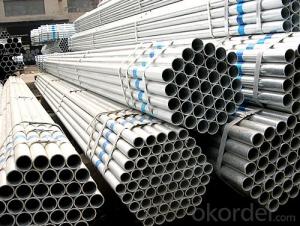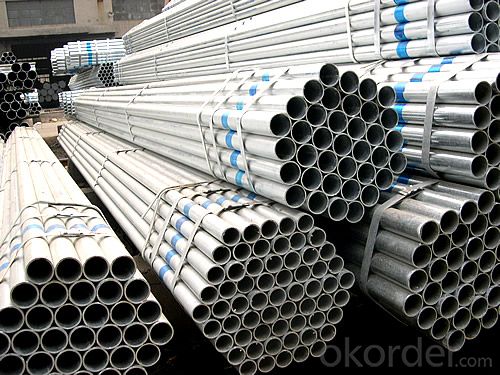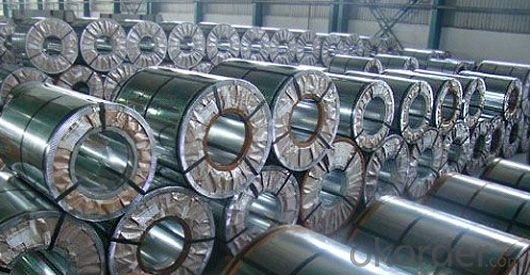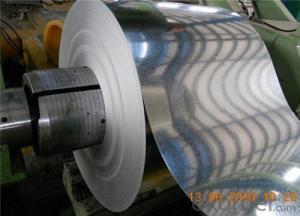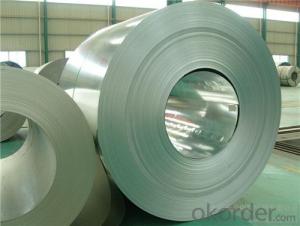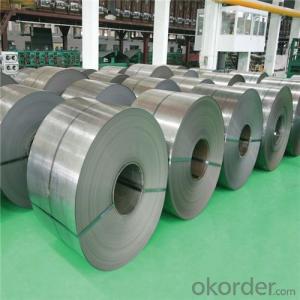Regular Spangle Galvanized Steel for Garage Doors
- Loading Port:
- Tianjin
- Payment Terms:
- TT OR LC
- Min Order Qty:
- 25 m.t.
- Supply Capability:
- 1000 m.t./month
OKorder Service Pledge
OKorder Financial Service
You Might Also Like
Regular Spangle Galvanized Steel for Garage Doors
Quick Details
| Standard: | ASTM, DIN, JIS | Grade: | A591, ST1203, G3313 | Thickness: | 0.25 ~ 2.40 |
| Type: | Steel Coil | Technique: | Cold Rolled | Surface Treatment: | Galvanized |
| Application: | Container Plate | Special Use: | High-strength Steel Plate | Width: | 20mm ~ 1524mm |
| Length: | As your requirement (Sheet & Coil) | Electro Galvanized Steel Sheet: | egi | Electro Galvanized Steel Sheet & Coil: | egi |
PRODUCT FEATURES
Formability - Unlike Hot-Dipped Galvanized Steel, the base metal of the Electro-Galvanized Steel
is less affected by the heat and therefore, it is able to retain its formability.
Paintability - Free from any spangles and pin-holes, the Electro-Galvanized Steel has a flawless
surface that is most ideal for any type of painting.
Corrosion Resistance - The EGI's evenly coated zinc enhances its resistance to any type of corrosion.
(Additional surface treatments are available for further enhancement of corrosion resistance.)
Weldability - Among all coated steel, the EGI has the highest weldability due to minimum
amount of zinc being coated.
.Application of hexavalent chromium alternative material
- Develop trivalent chromium, a stable material, as the main component
(Add etching agent, reducing agent, level agent, etc.) : Cr-free, non-toxic chromate
- Superior corrosion resistance: secure same corrosion resistance level of existing products
.Environment-friendly products
- Environment-friendly products harmless to humans and environmental pollution preventive
- Actively corresponds to environmental regulations of Europe and other leading countries
Specification & Available size range
| Item | Figure | Coating | Quality | Surface |
| Thickness | 0.25 ~ 2.4mm | 05/05 G/SQ MTR | SECC | PHOSPHATED |
| Width | 600~ 1,524mm | 10/10 G/SQ MTR | SECD | CHROMATED / CHROME FREE |
| Sheet Length | 600 ~ 5,000mm | 20/20 G/SQ MTR | SPEC | OILED |
| Coil Inner Diameter | 508 / 610 mm | 30/30 G/SQ MTR | SECEN | ANTI FINGER |
An order of inquiry should be accompanied by the following information.
1. Size : Thickness / Width / Length ( in case of Cut Lengths).
2. Specification requirement : Coating designation or Wt / Type of coating & surface treatment
Coil I.D / Packing Weight.
3. Quantity.
4. Intended use
5. Packing and marking requirement.
6. Delivery Requirement.
7. Required inspection, if other than mill inspection.
8. Other pertinent information.
Picture:
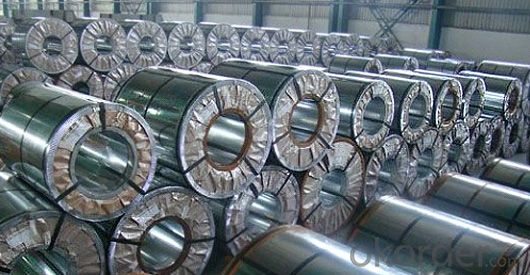
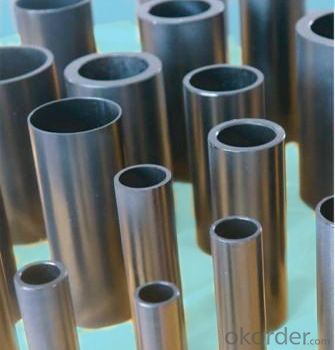

- Q: How do steel coils contribute to acoustic performance in buildings?
- Steel coils contribute to acoustic performance in buildings by providing sound insulation and reducing noise transmission. The dense and solid nature of steel helps to block and absorb sound waves, preventing them from passing through the building structure. This results in a quieter and more comfortable indoor environment, improving the overall acoustic quality of the building.
- Q: I have a belly button piercing and the metal is stainless steel.. I was wondering does it develop rust whenever you go shower and clean it? Can I still swim in the summer with it or do I have to take it out? What happens if I swim in the pool with it?
- No it won't rust. Just make sure to get the pool water out of the piercing when done at the pool. Just to avoid drying out the skin too much.
- Q: Can steel coils be coated with anti-glare materials?
- Yes, steel coils can be coated with anti-glare materials. Coating steel coils with anti-glare materials helps to reduce or eliminate the reflection of light, improving visibility and reducing eye strain in various applications.
- Q: I saw an amazing flamenco player, however i have a steel string guitar, where he had a nylon stringed one. So i was wndering if its possible to play flamenco songs on the steel string guitar, and where could i find a tab for it? are there tabs for rasegueados?
- Rocket Languages it is a acknowledged leader in online language understanding. With Rocket Language course you will have characteristics like: voice recognition, testing, games, in-built flashcard app and a intriguing design. Rocket Languages is the best option to understand Spanish language.
- Q: What is the difference between steel coils and steel sheets?
- Steel coils and steel sheets differ primarily in their form and dimensions. Steel coils are long, continuous rolls of steel that have been wound up after being processed. They are typically produced in large quantities and are used in various industries, such as automotive and construction. Steel sheets, on the other hand, are flat pieces of steel that have been cut from coils or directly produced in a flat form. They come in different sizes and thicknesses, making them more suitable for specific applications such as roofing, cladding, or fabrication. In summary, while steel coils are the raw material for steel sheets, the main distinction is that coils are long rolls, while sheets are flat pieces of steel.
- Q: I got a muzzy carp point arrow and its head is steel with 1.7% carbon, its used in the water. Will i have to dry it after every use or is it stainless. Thanks
- carbon will rust.. stainless doesn't rust unless it touches carbon so its definitely not stainless. Since its only 1.7% its extremely unlikely that it will rust unless you leave it outside for extreme long periods of time. Either way you should take care of it. Put it in the garage or something but you don't have to dry it after every use.
- Q: What are the dimensions of steel coils used in the construction equipment industry?
- The dimensions of steel coils used in the construction equipment industry can vary, but they are typically around 48 to 72 inches in width and have an outer diameter of 60 to 80 inches. The weight of these coils can range from 5,000 to 30,000 pounds.
- Q: How are steel coils used in the automotive industry?
- Steel coils are widely used in the automotive industry for various applications such as body panels, structural components, and engine parts. They are typically formed and shaped into desired forms through processes like stamping, bending, and welding. Steel coils provide strength, durability, and corrosion resistance to the vehicles, ensuring their safety and longevity.
- Q: How are steel coils used in the production of aerospace structures?
- Steel coils are used in the production of aerospace structures as they provide the necessary strength and durability required for the construction of aircraft components such as fuselage frames, landing gear, and engine mounts. These coils are processed and formed into various shapes and sizes to meet the specific requirements of each structural element, ensuring the safety and performance of the aerospace system.
- Q: How are steel coils used in the manufacturing of industrial conveyors?
- Steel coils are used in the manufacturing of industrial conveyors as they provide a sturdy and reliable base for the conveyor systems. The coils are typically formed into various shapes and sizes to create the conveyor frames and supports, ensuring durability and stability throughout the conveyor's operation. Additionally, steel coils can be cut and shaped to form conveyor belts, which play a crucial role in transporting materials and products efficiently within industrial settings.
Send your message to us
Regular Spangle Galvanized Steel for Garage Doors
- Loading Port:
- Tianjin
- Payment Terms:
- TT OR LC
- Min Order Qty:
- 25 m.t.
- Supply Capability:
- 1000 m.t./month
OKorder Service Pledge
OKorder Financial Service
Similar products
Hot products
Hot Searches
Related keywords
